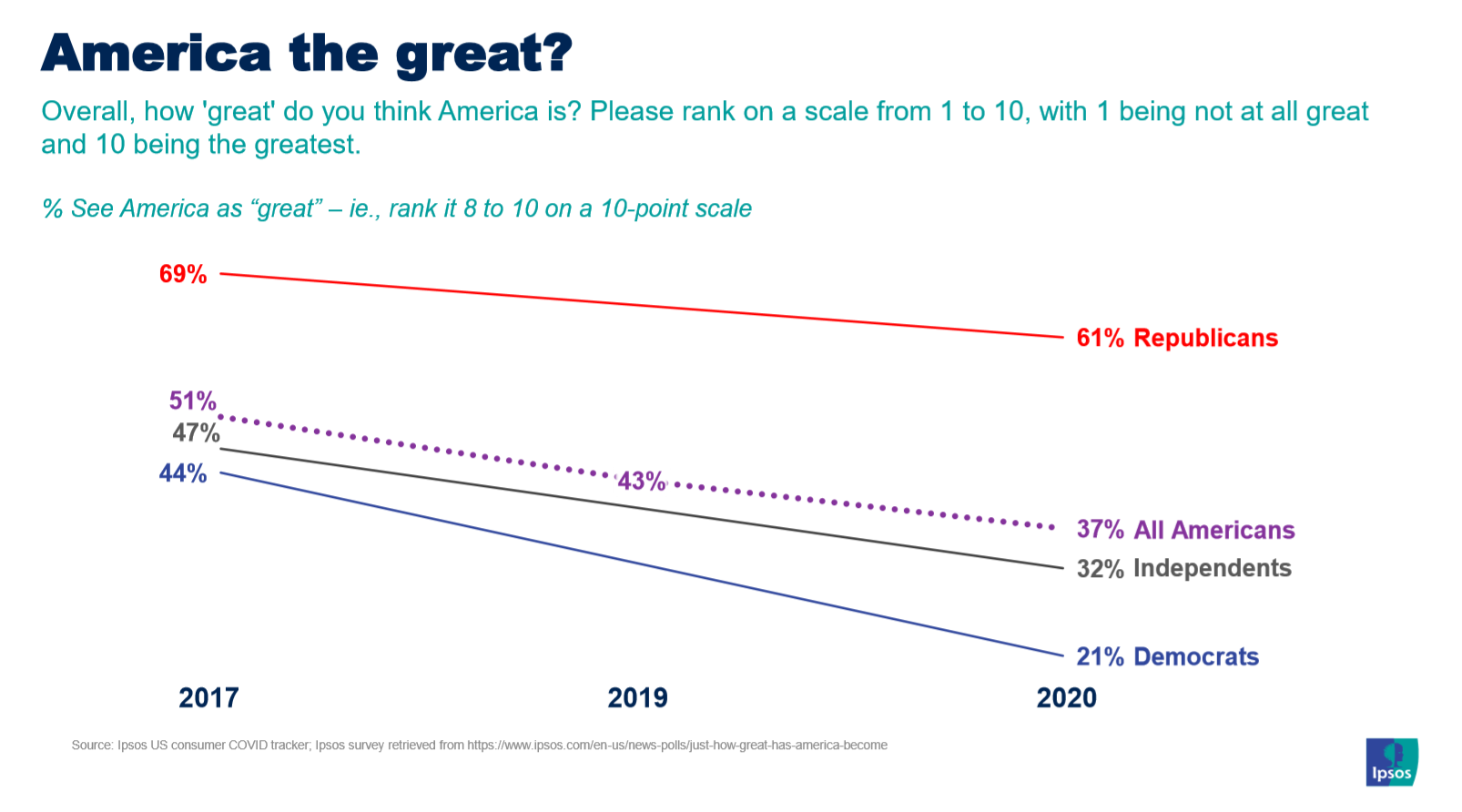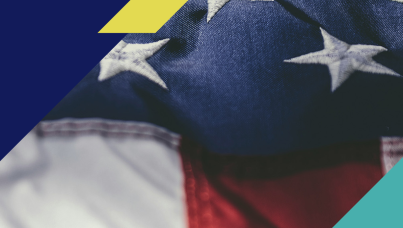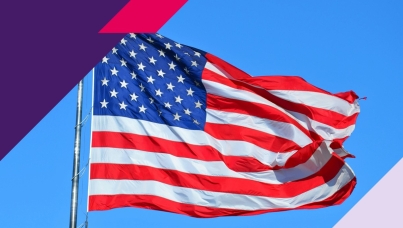2020 in charts
2020 was the year that the word “unprecedented” first became ubiquitous, and then overused, as the nation struggled to keep pace with the rapidly evolving events of the day. From a global pandemic, to economic free fall, to widespread protest against racial inequality, the improbable and unforeseen became our lived reality in 2020.
Ipsos tracked the evolution of the most critical and relevant trends in public opinion as they unfolded. To celebrate the close of 2020, we summed up the year in charts.
1. Concern about the coronavirus hinges on partisan affiliation. From the start of the pandemic, Democrats were much more concerned about the virus than Republicans – and have remained so. This divide shows no sign of narrowing even as more than 19 million Americans have tested positive for the virus.
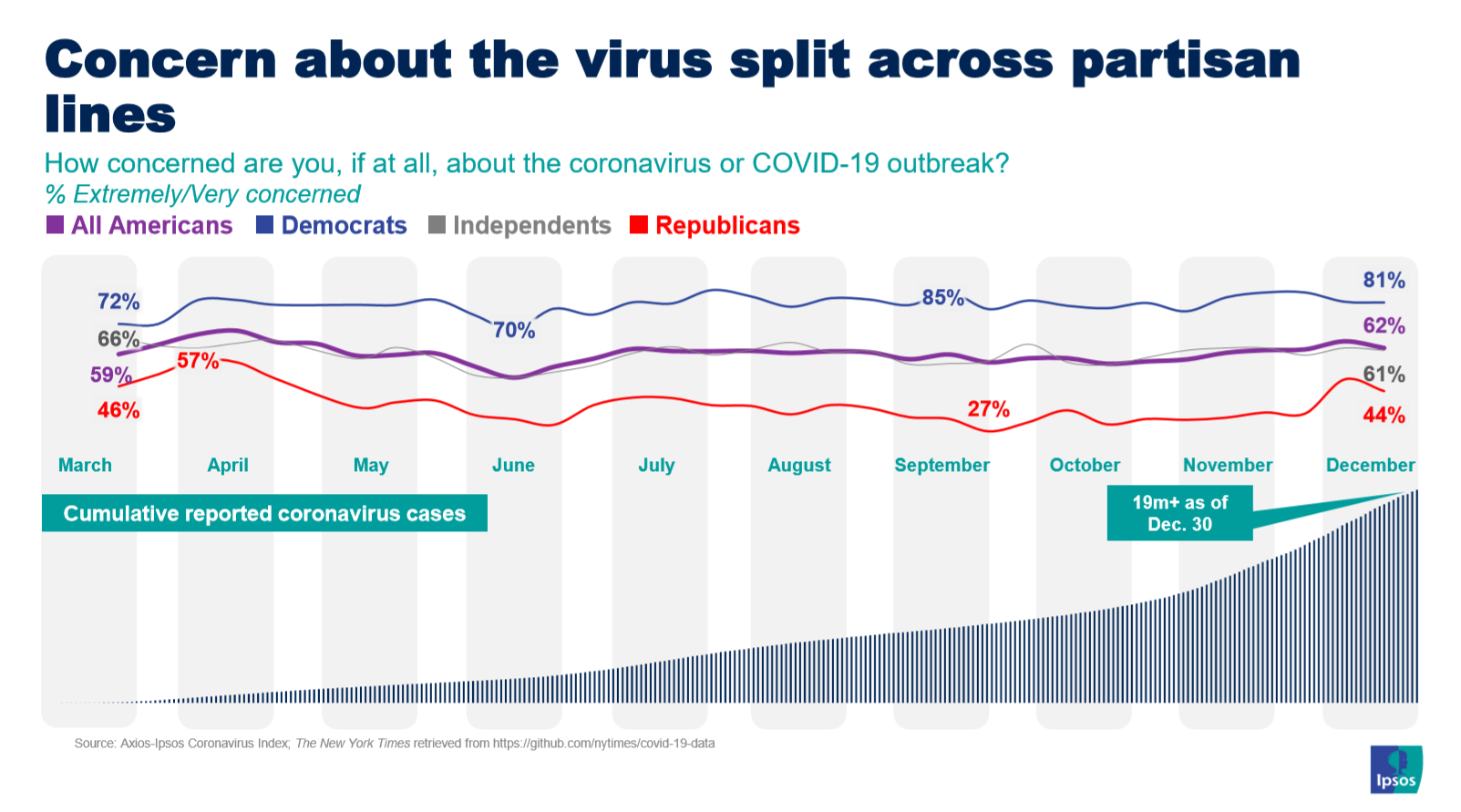
2. Mask wearing increased as the number of Americans proximate to the virus doubled. Though Republicans are still less likely to do so than Democrats, more Americans are now practicing this basic precautionary measure than were at the start of the pandemic. A recent Ipsos survey of survivors of the virus underscores that a direct connection to the virus helps people fully understand the risks.
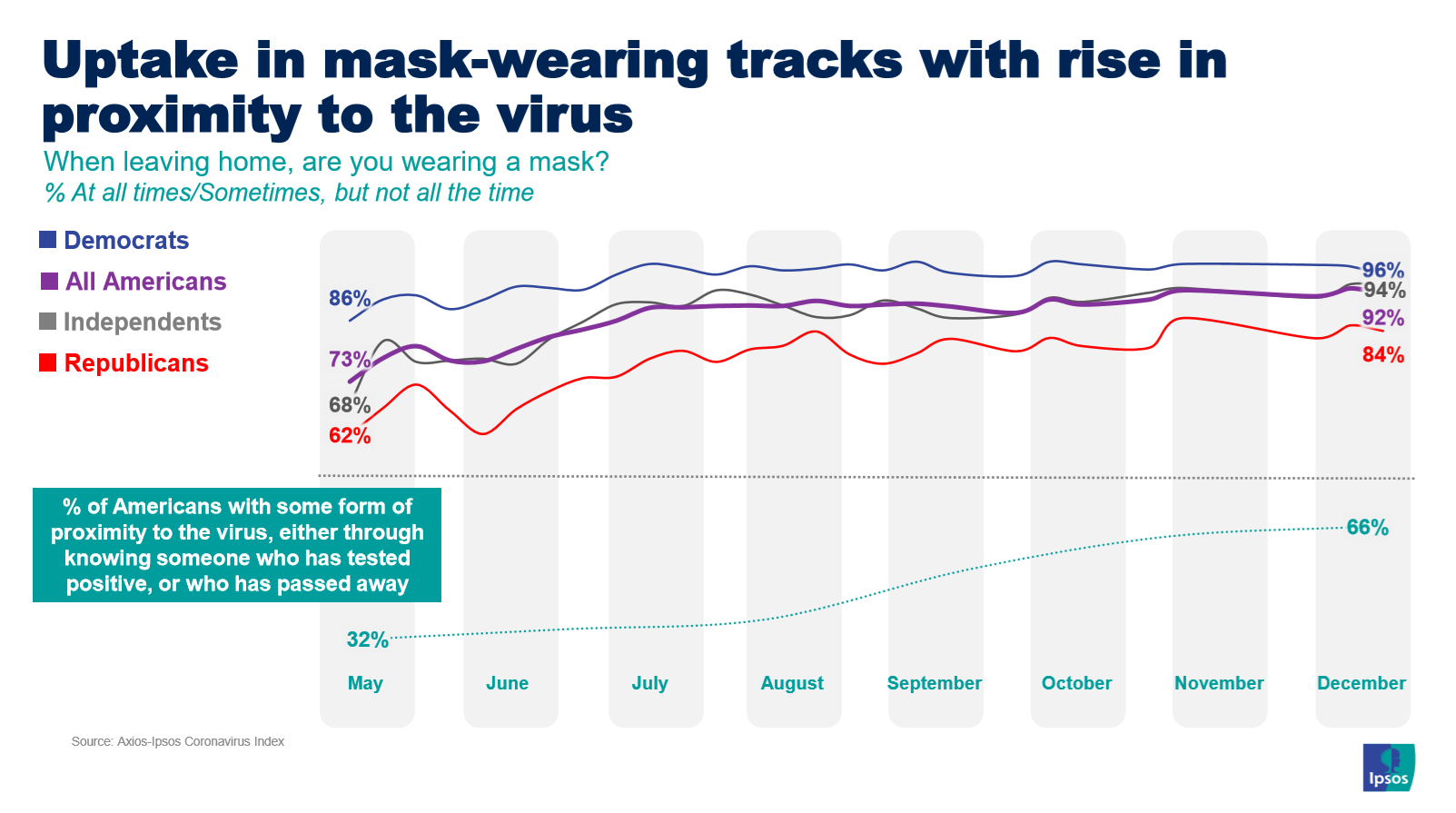
3. As of December 30th, the coronavirus pandemic had claimed the lives of more than 336,000 Americans. But not all Americans believe this is true, as misinformation and conspiracy theories about the virus run rampant. Instead, who – and what – Americans believe about the virus is strongly linked to their political ideology and what news sources they trust.
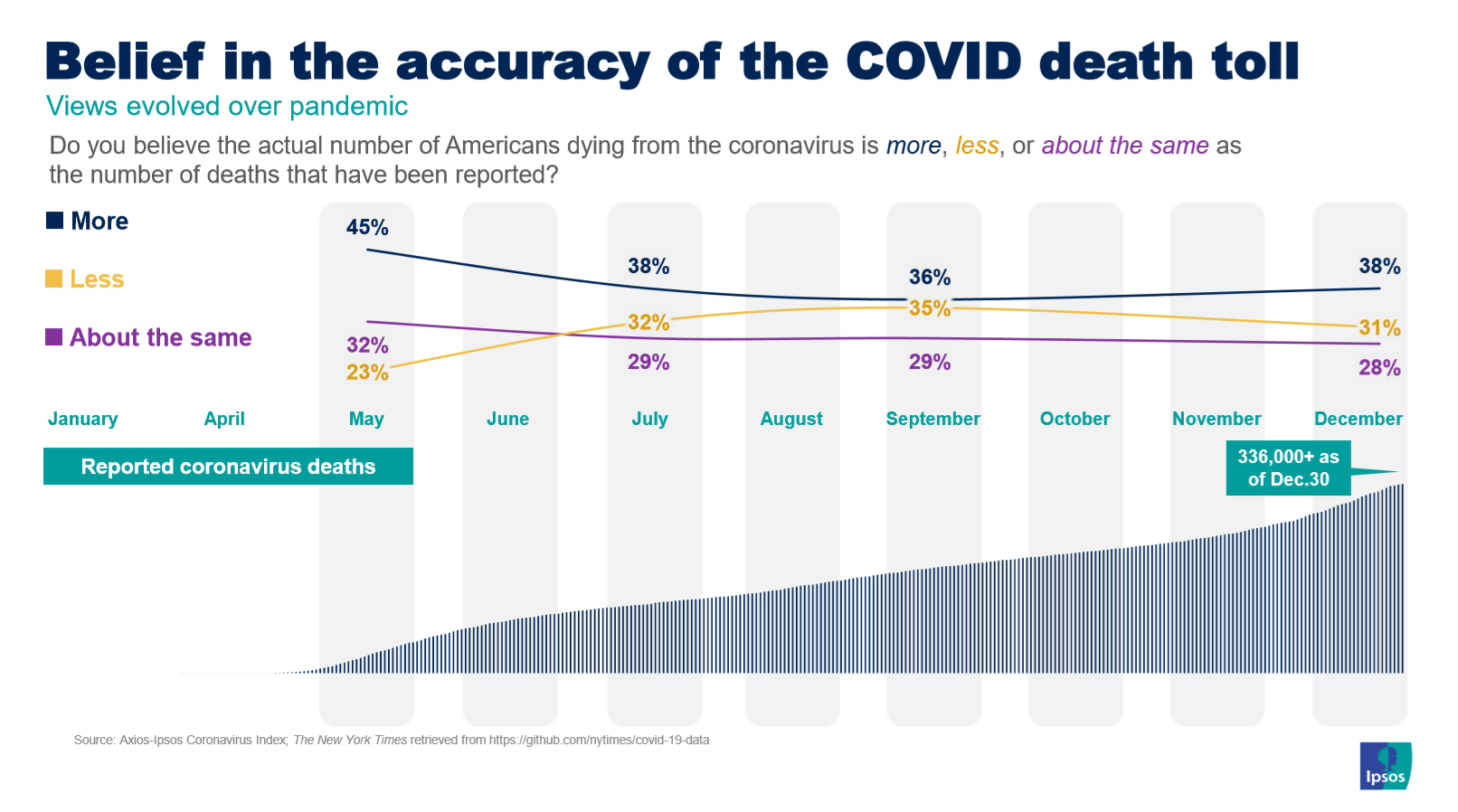
4. As the virus leaves its trail of destruction across the nation, the number of Americans who say they have no direct connection to it – either through knowing someone who tested positive or knowing someone who died as a result of it – has fallen to just 34%. But the full weight of the virus has not been distributed equally. Americans of color are disproportionately impacted, with Black and Hispanic Americans more likely to know someone who lost their life as a consequence of COVID-19.
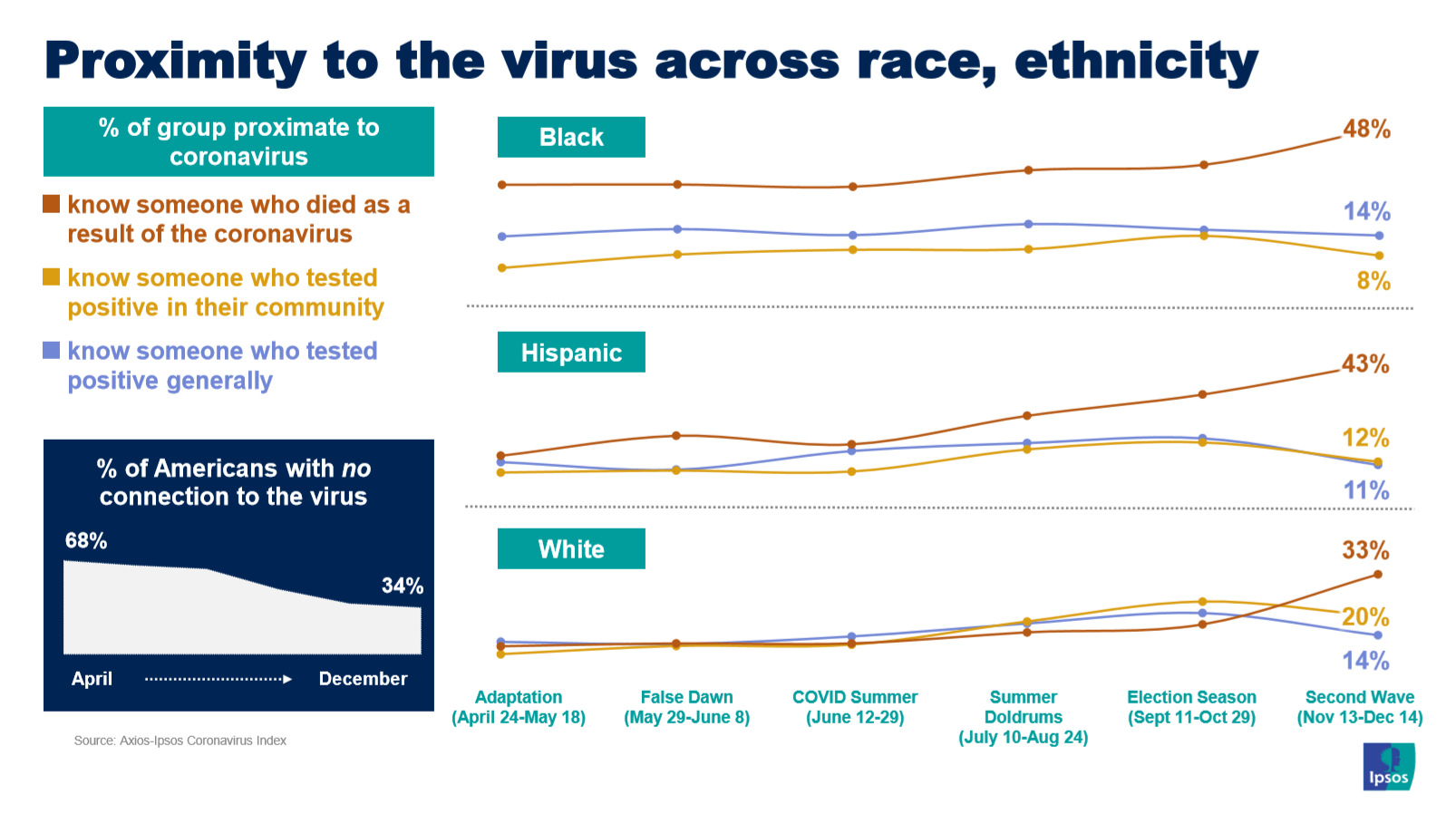
5. The virus’ disproportionate impact on people of color underlined other disparities across racial lines. In late May, the death of George Floyd at the hands of Minneapolis police officers precipitated thousands of protests across the country against racially-motivated police violence. Meanwhile, the Black Lives Matter movement gained new prominence and support.
But as the summer wore on, views about the protests fell prey to polarization, much as the pandemic did. While just over half of Americans continued to support the protests, a sizeable minority grew more concerned about the implications for maintaining “law and order.”
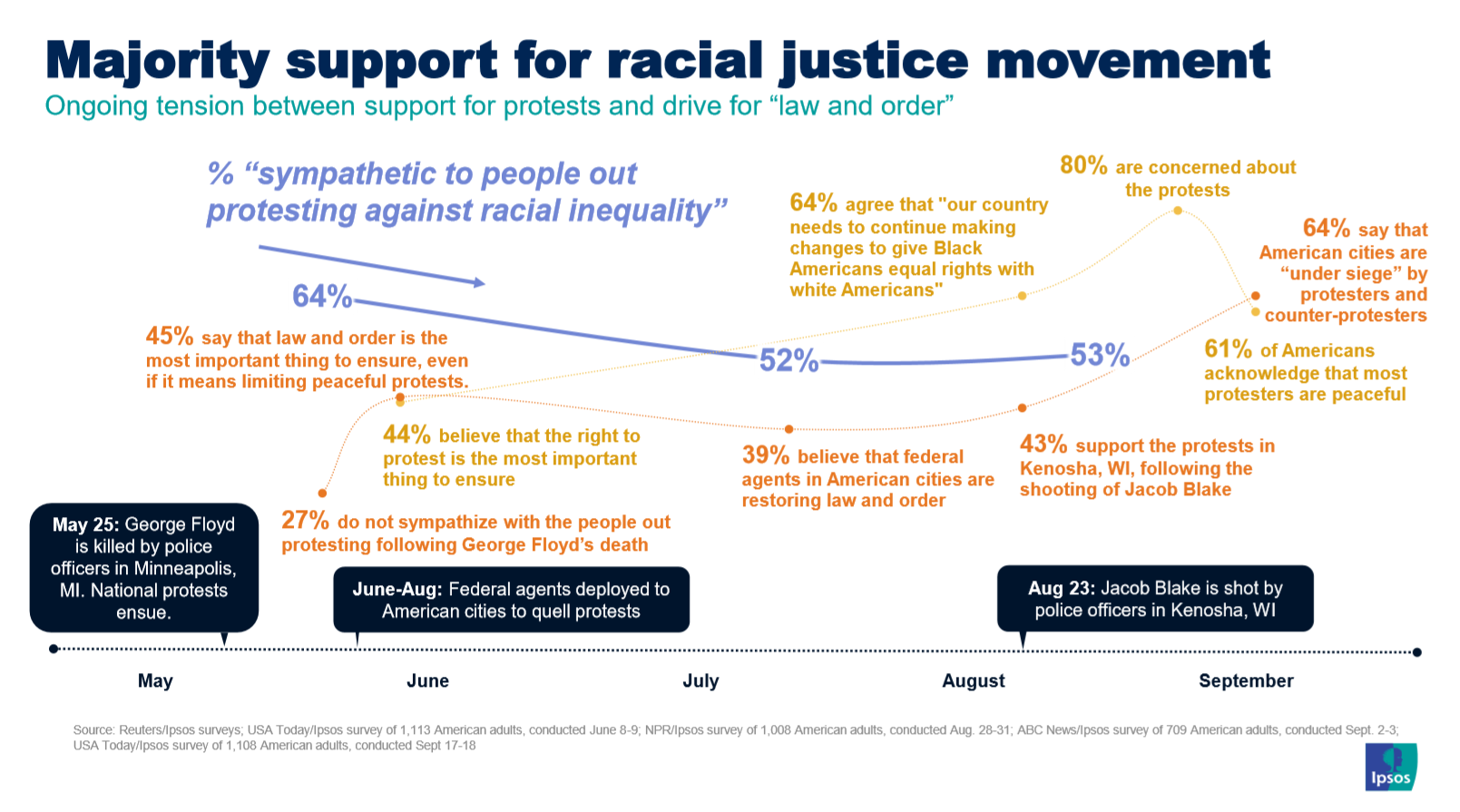
6. Given the many vicissitudes of 2020, it will hardly come as a surprise that the year did a number on Americans’ overall sense of well-being. Women suffered a great deal from the stress of this year, taking a hit not just emotionally but also financially and in lower rates of employment.
On a more optimistic note, Americans have higher expectations for 2021. Just 9% believe it will be worse than the past year.
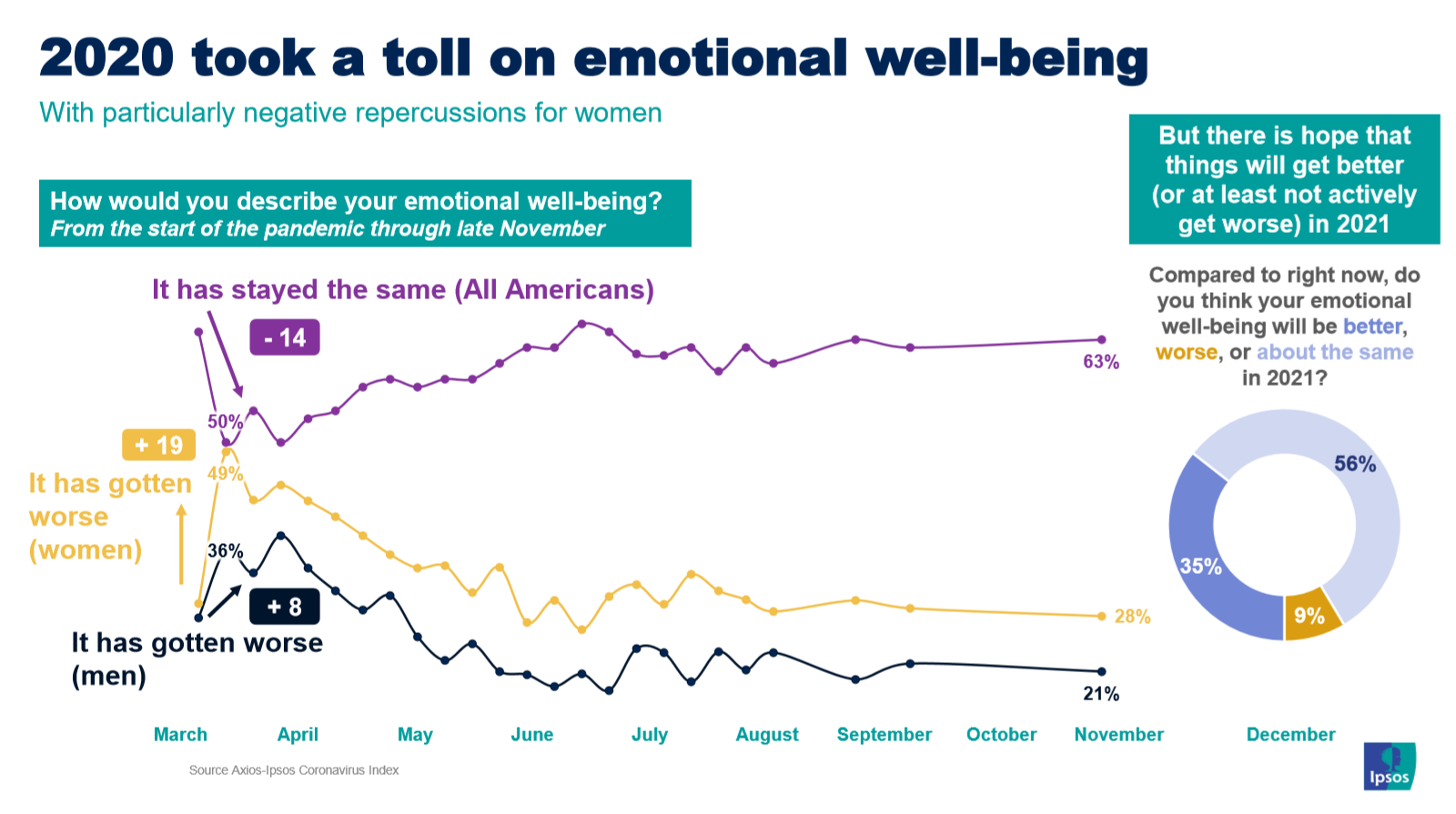
7. For parents, 2020 was particularly stressful with schools going virtual, putting the pressure on them to ensure that their children kept learning or were otherwise cared for during the school day. As of September, more than half said their children were learning from home. Managing these new responsibilities not been easy for parents – three in four say that it has been a disruptive element in their lives.
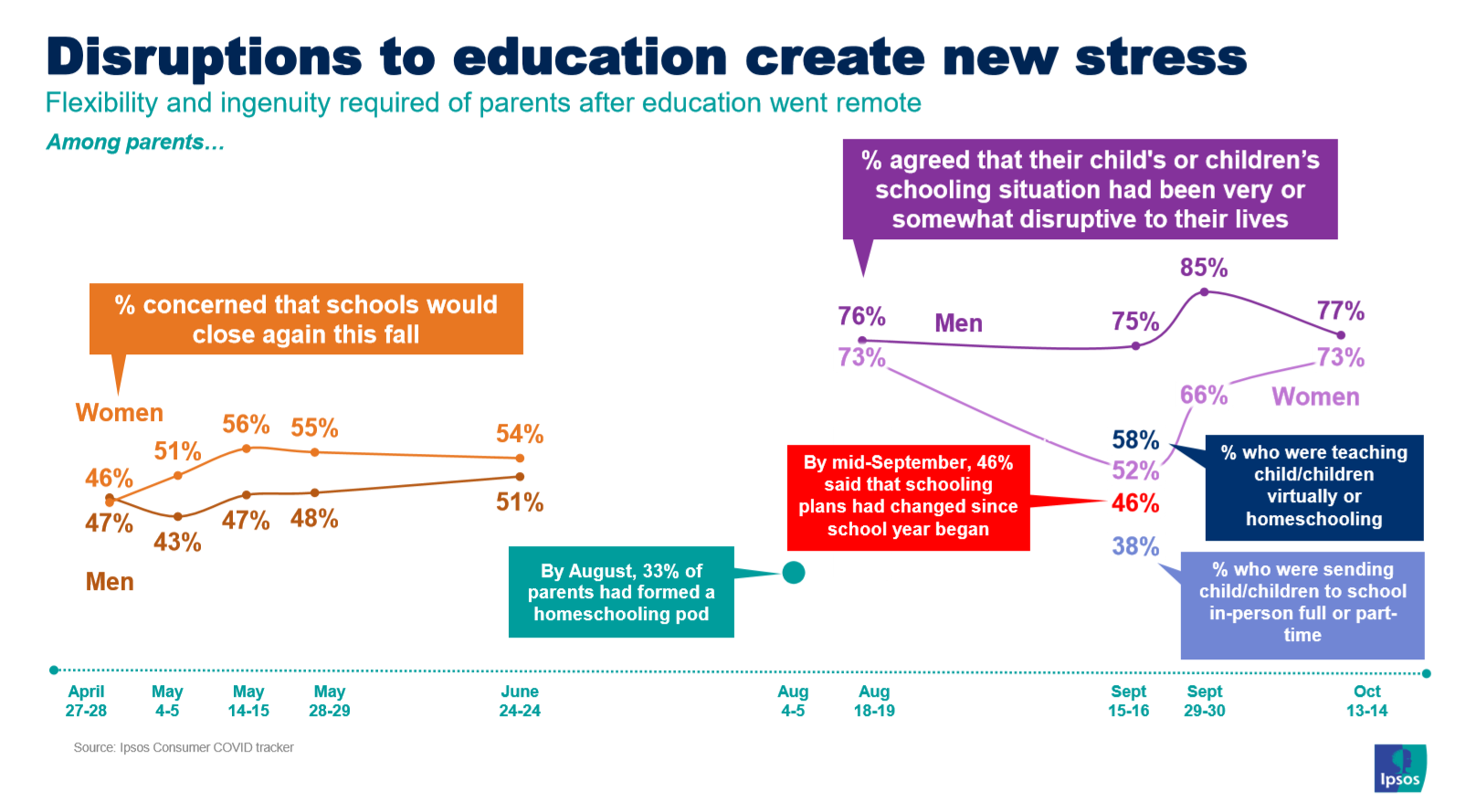
8. The 2020 election saw historic levels of turnout, with millions more Americans primed to vote in a presidential race that they viewed as a “battle for the soul of the nation.” Many on both sides were unprepared to accept a win for the other team as legitimate, a quandary for faith in our democratic institutions. Even as the vote tallies affirmed Joe Biden’s win, a full 23% of all Americans believed that Trump was the rightful winner as of mid-November.
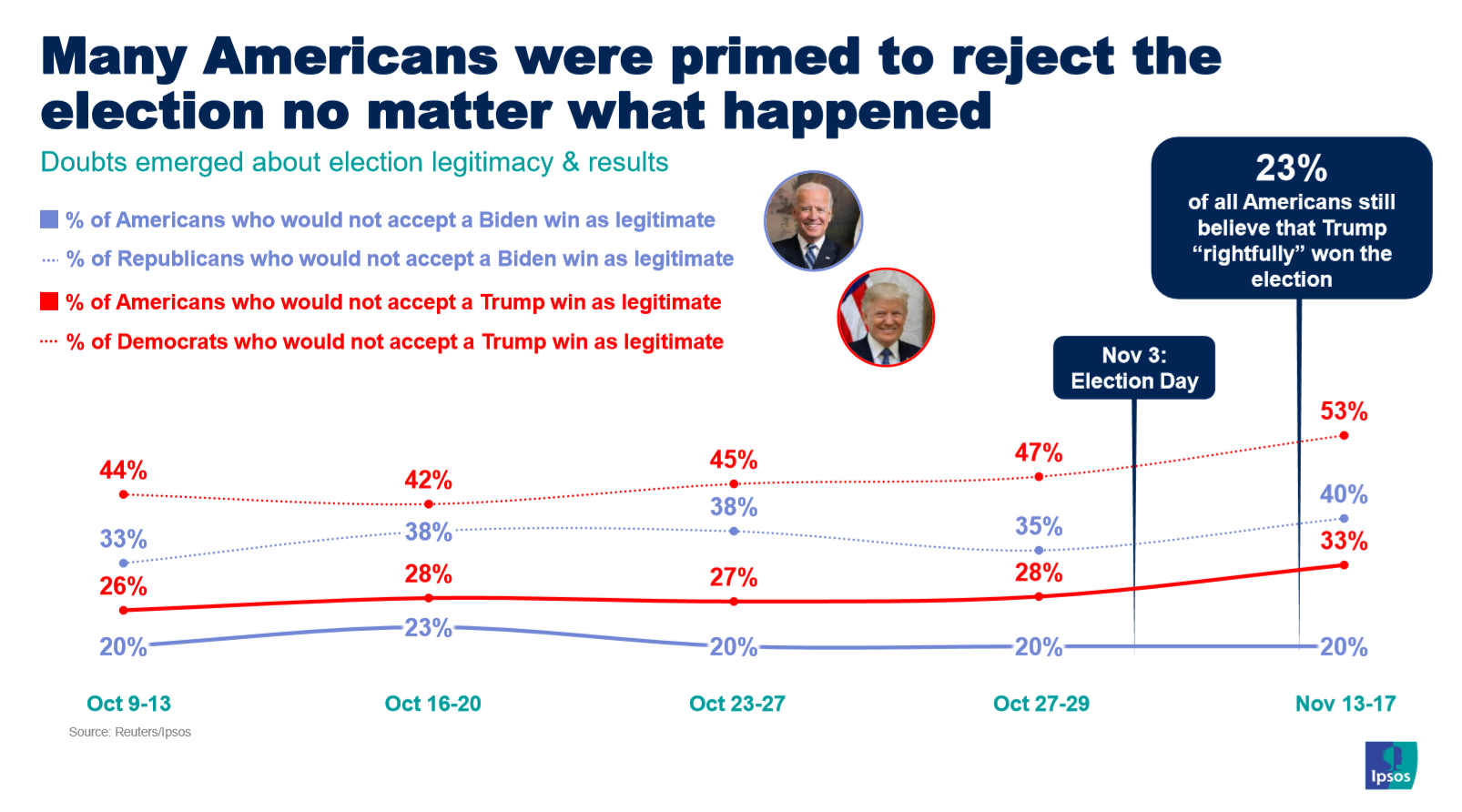
9. The effects of hyper-partisanship are also evident in the sudden shift in consumer confidence post-election. Throughout the pandemic, Republican optimism about the economy was consistently higher than it was among Democrats, reaching new heights during the election season only to fall 12.4 points from the week before the election to December. By contrast, Democrats are showing new, albeit still muted, signs of optimism after Biden’s win and the FDA’s emergency authorization of the coronavirus vaccine.
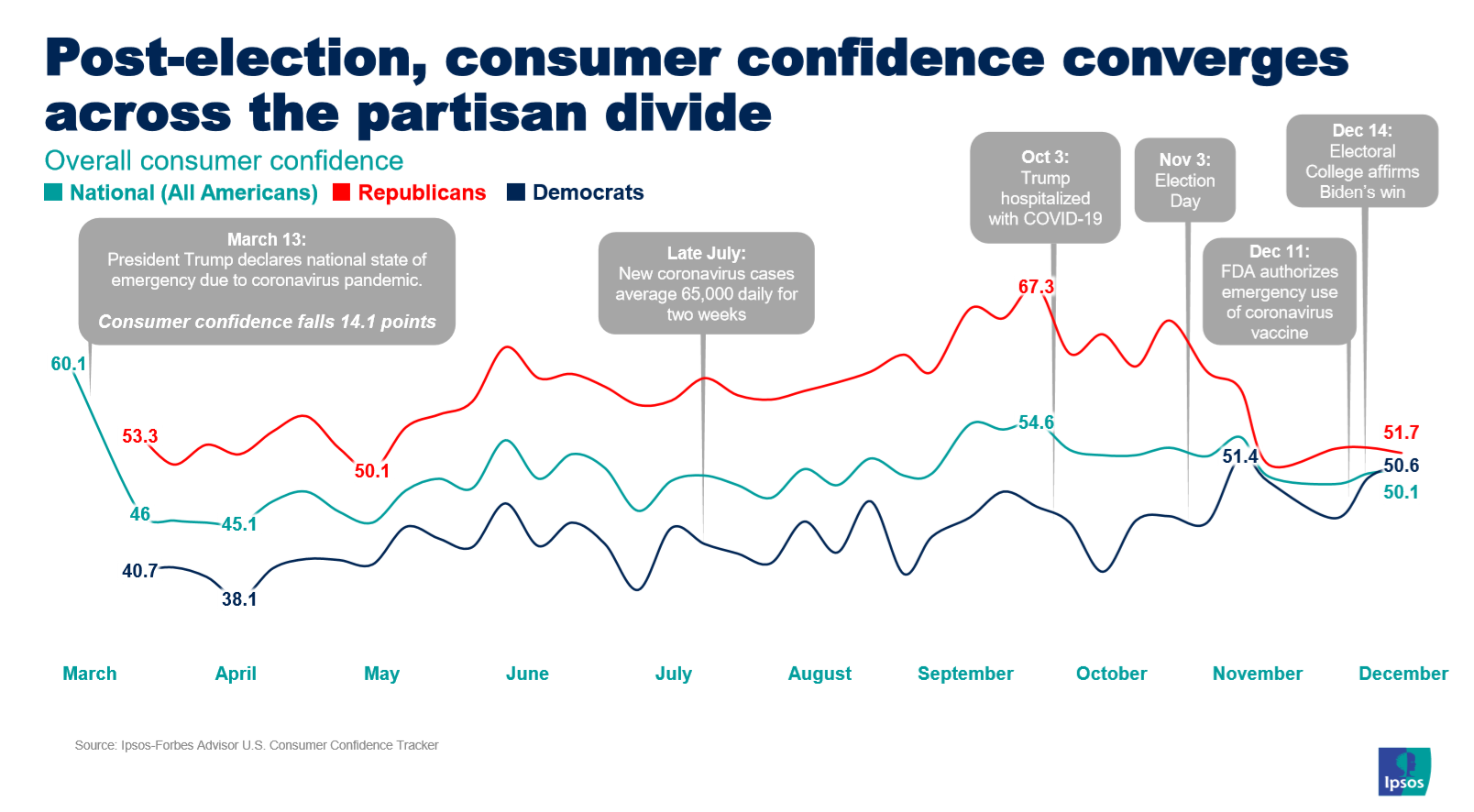
10. Our post-COVID future rests on the successful rollout of the Pfizer and Moderna vaccines. In an encouraging sign for widespread buy in, the number of Americans open to getting the vaccine as soon as it is available is steadily moving up, though more Americans would still prefer to get the vaccine after it has been on the market for a few months or otherwise vouched for by public health officials or pharmaceutical companies. To achieve herd immunity, experts say that anywhere from 70% to 90% of the population will need to be inoculated.

11. After this calamitous year, views of American exceptionalism have dimmed. Just 37% of all Americans still believe that America is “great.”
